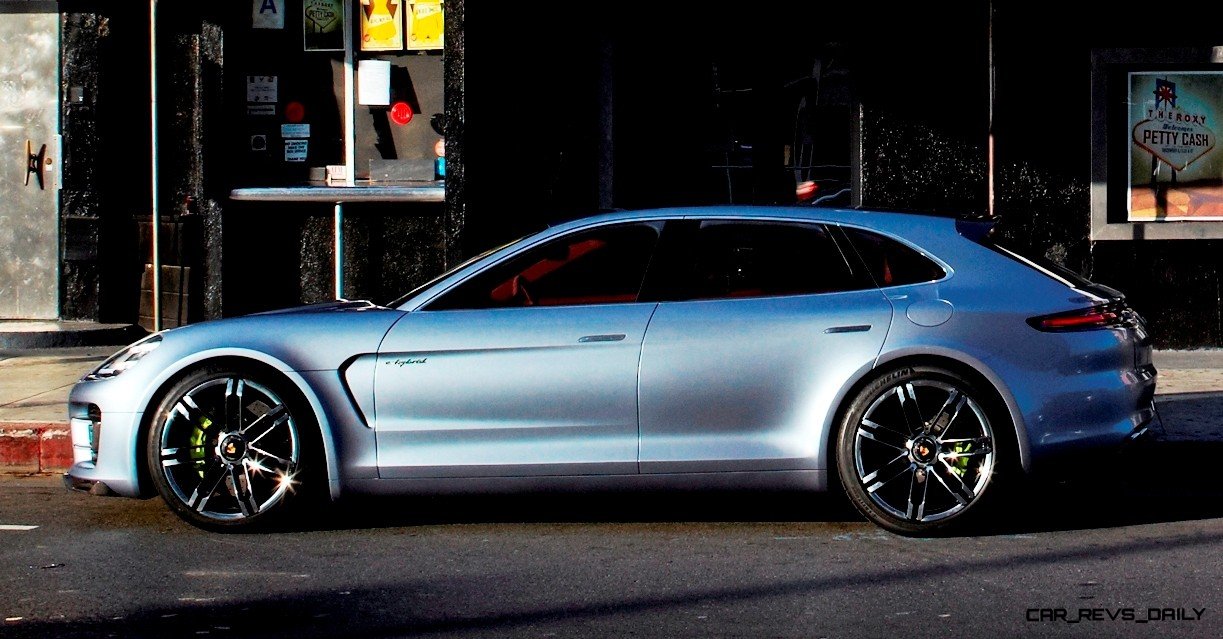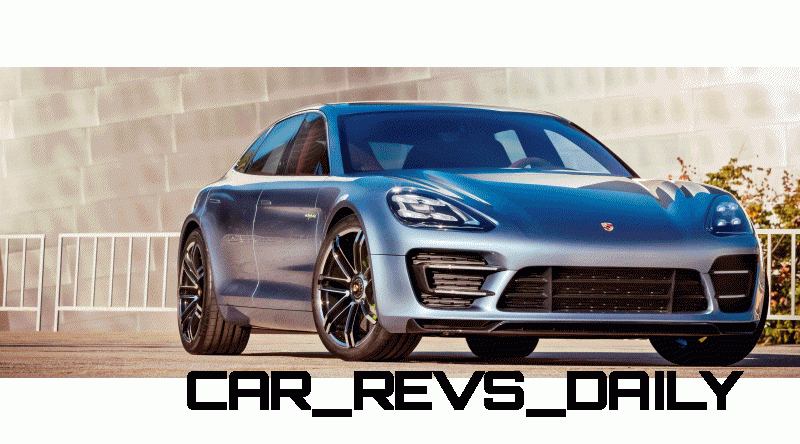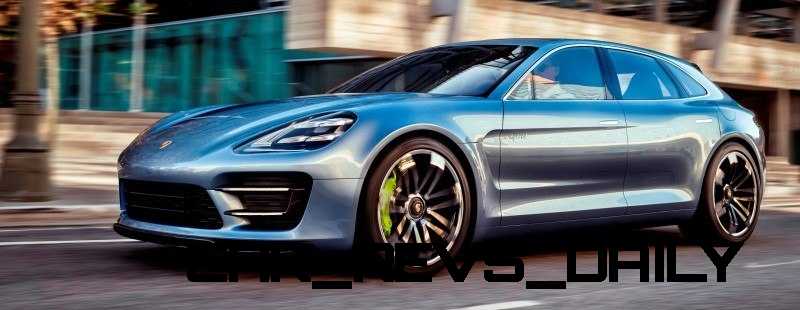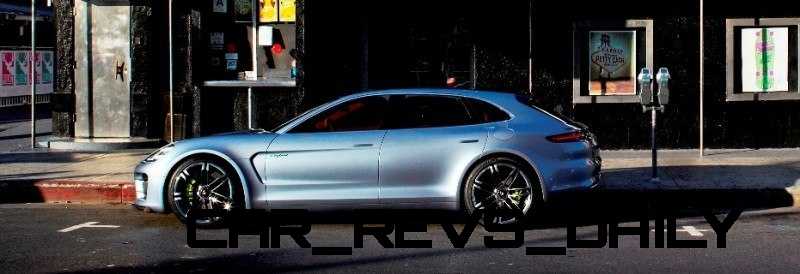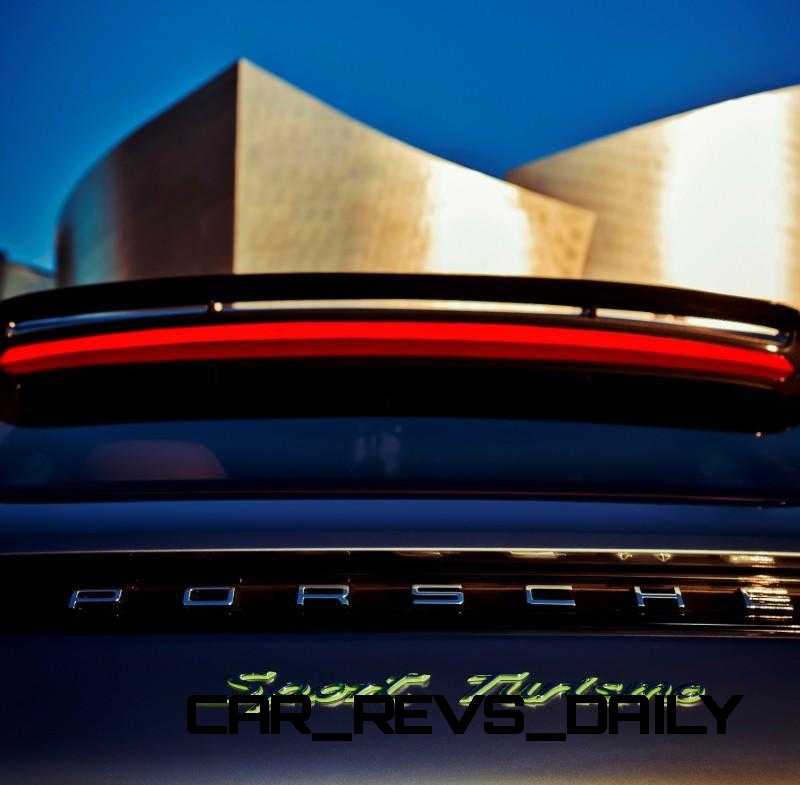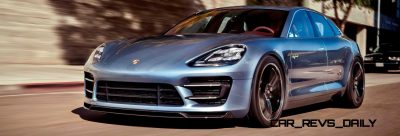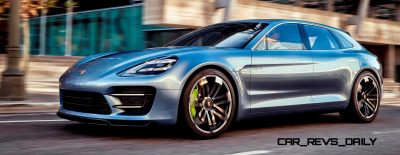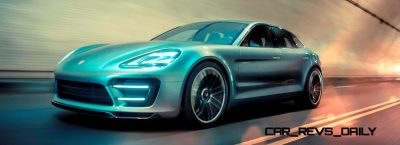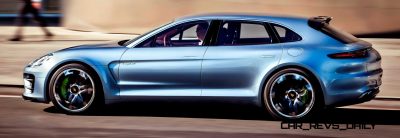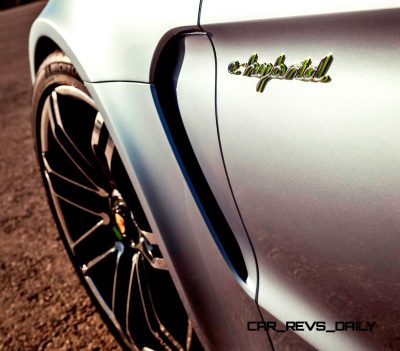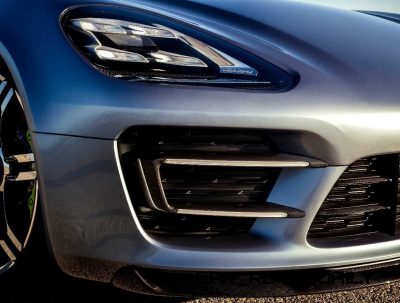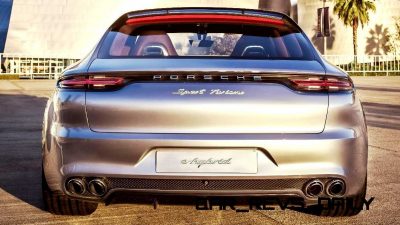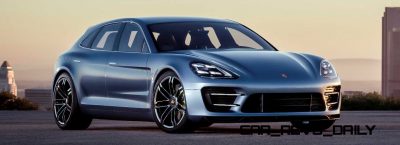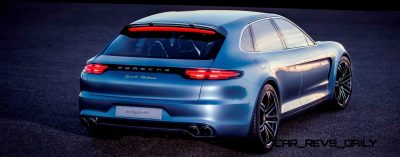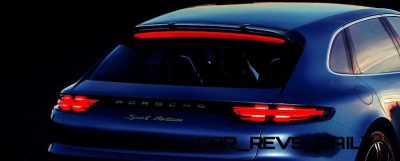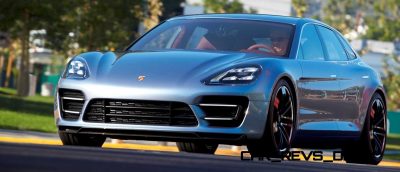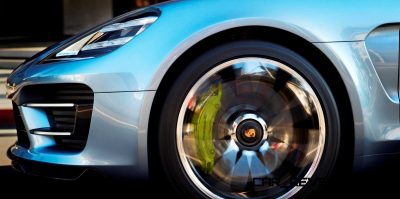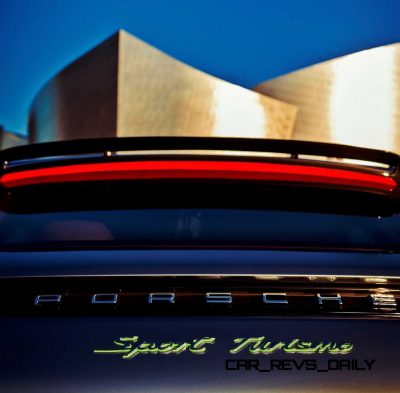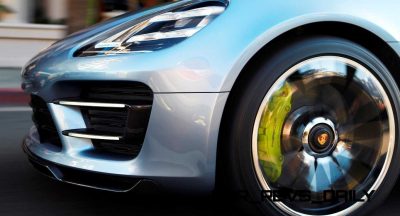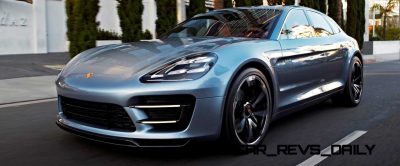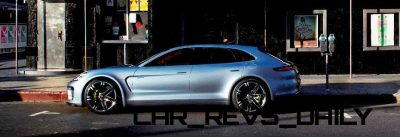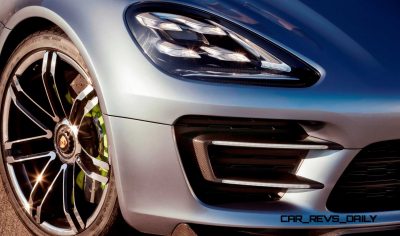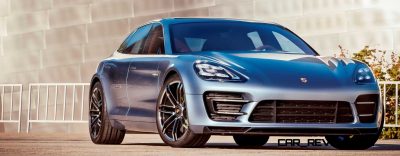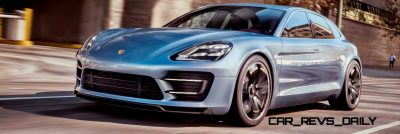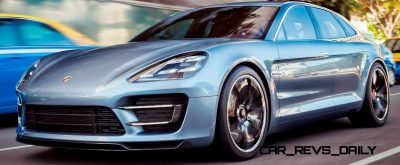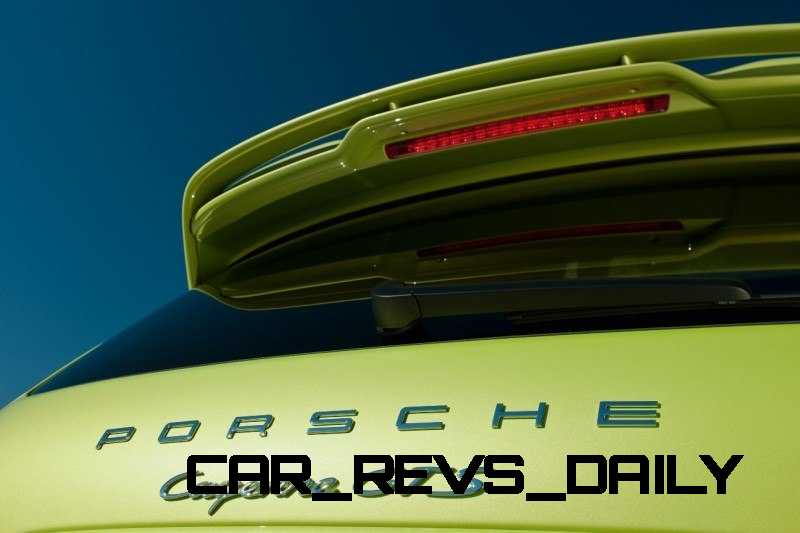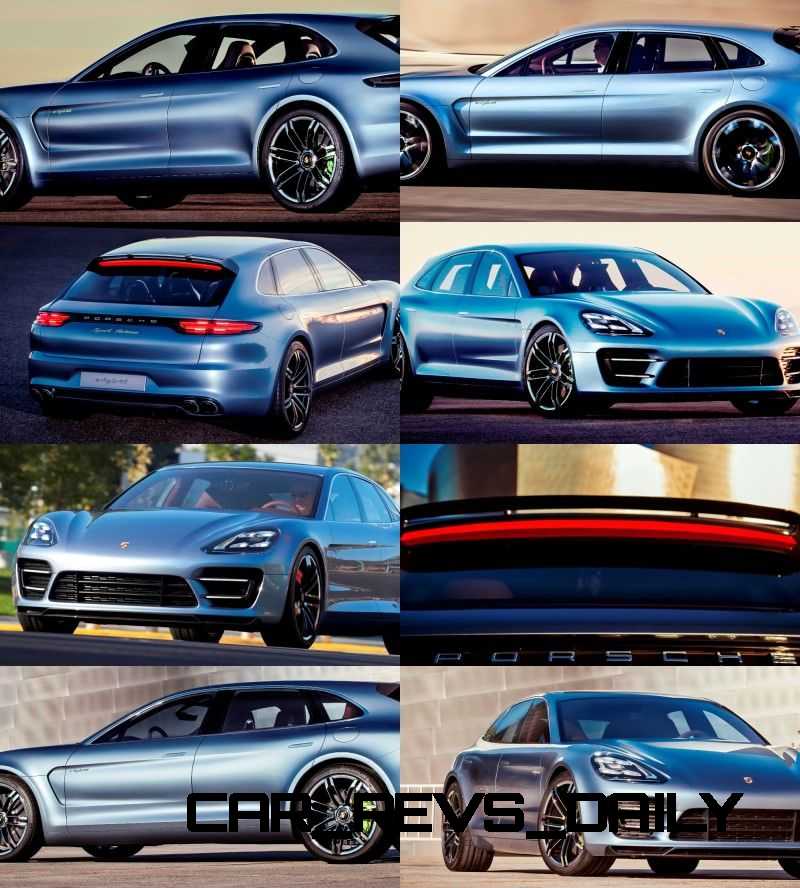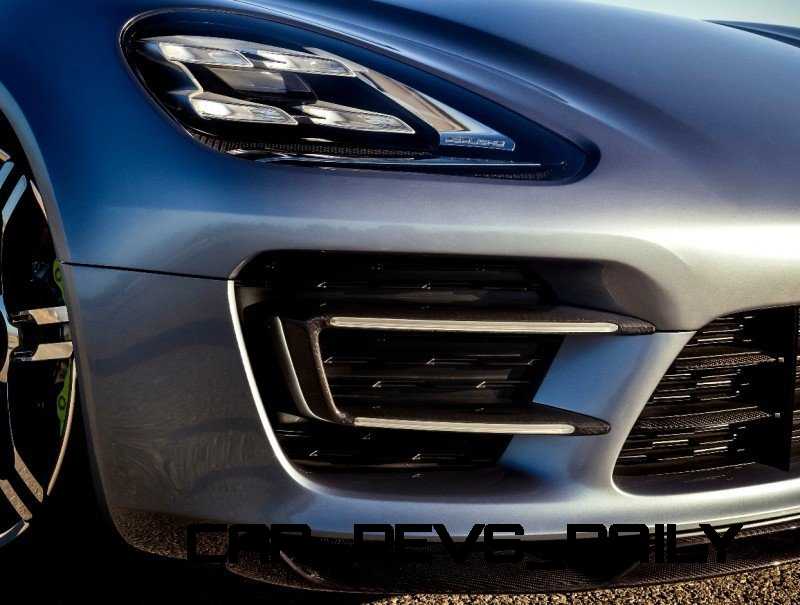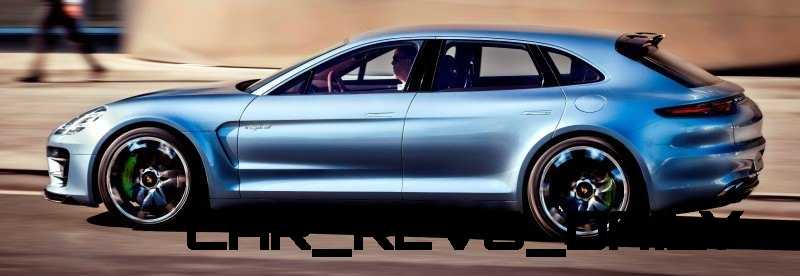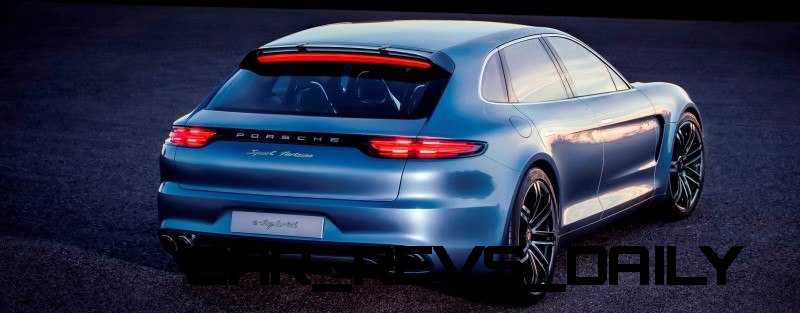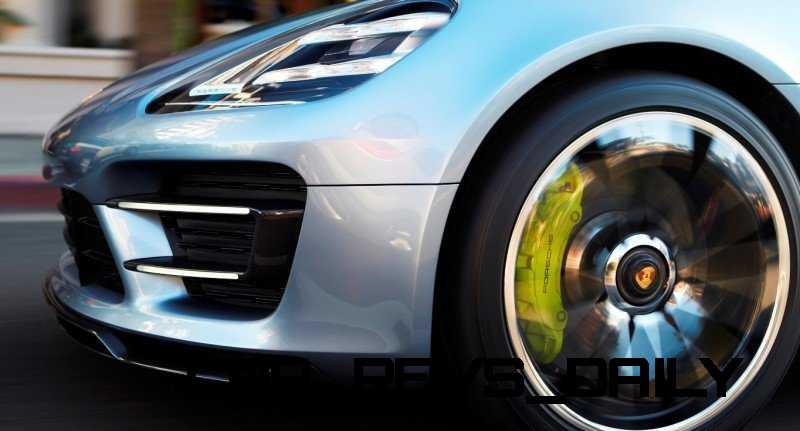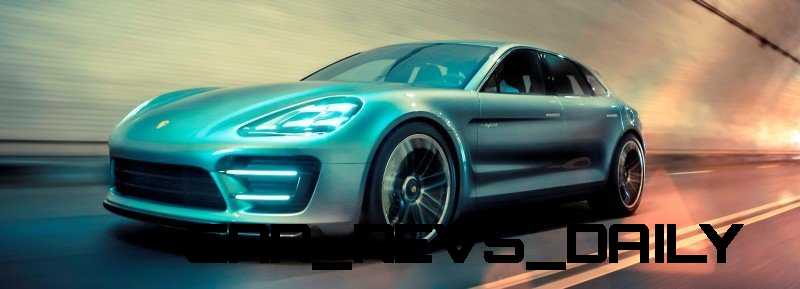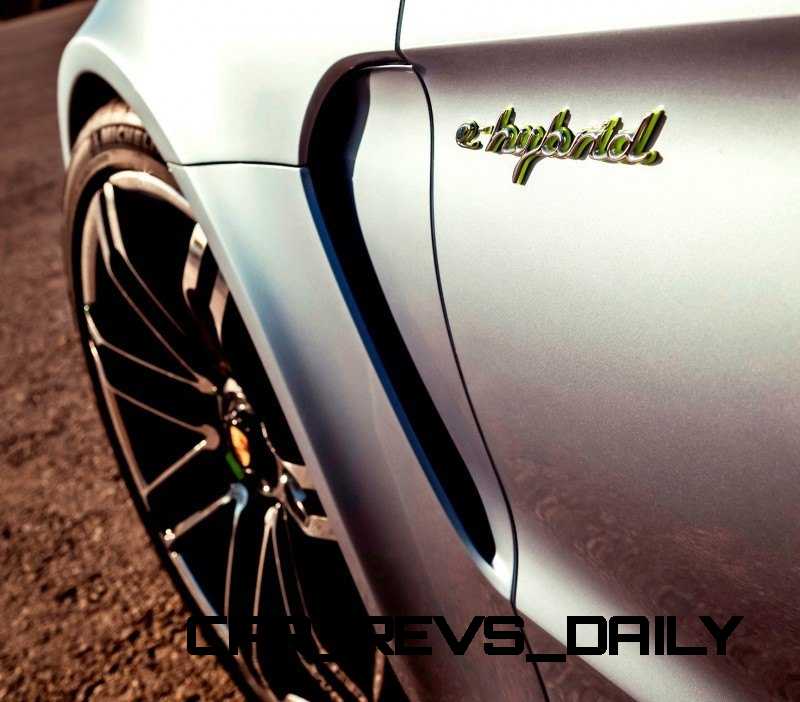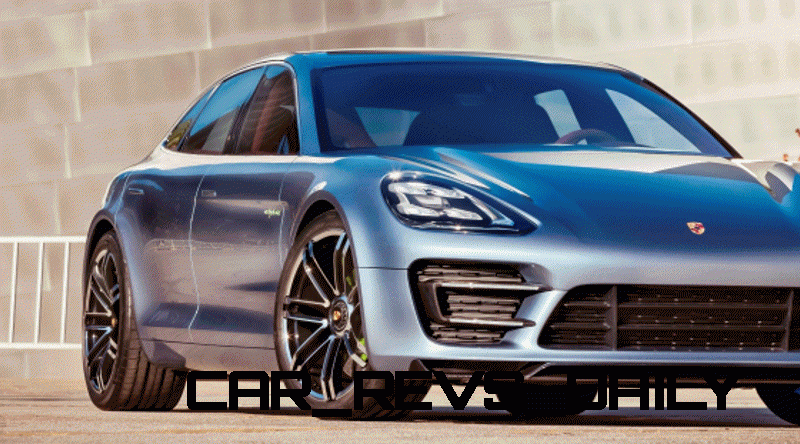The Panamera Sport Turismo Concept is still quite miraculous, even more than a year since its initial debut.
Widely believed to preview the 2014 Panamera facelift, the Sport Turismo has had an even larger impact on a different model altogether: the Macan.
Much of the creamy and smooth surfacing, huge rear arch bulges, and the nose treatment all directly previewed the handsome new Macan S and Macan Turbo models.
From the start of the Sport Turismo’s media tour, Porsche insisted that this model could appear as a new body style for the second-gen Panamera. It was hard to believe at the time, when Porsche was finalizing the Panamera’s changes and camo’d mules were a daily sight.
In hindsight, they were being quite honest. The new Panamera facelift is far more subtle than anything seen on the Sport Turismo concept.
But the good news is still forthcoming – perhaps as a 2015 model year launch. “Panamera Turismo” has a nice ring to it. This car is surely a work of art.
2012 Porsche Panamera Sport Turismo
On second thought, this car is quite likely to shape the next Cayenne. The LED brake lightbar would certainly look nice with the Cayenne’s huge rear spoilers!
CarRevsDaily – TallPapers
Official 2012 Porsche Release below.
Porsche concept car offers glimpse of a sports car of tomorrow

Sporty, functional, efficient: Panamera Sport Turismo

Porsche is presenting the Panamera Sport Turismo concept car to show how amazingly intelligent and efficient drive technology might look in the design language of tomorrow. The Sport Turismo unites the next generation hybrid drive with new ideas for an evolutionary, sporty body concept; it combines Porsche performance with comprehensive everyday practicality.
Body: sports appeal and functionality in further developed design

The body concept of the Panamera Sport Turismo is an outlook on a possible Porsche sports car of tomorrow: the overhangs are short and the boot lid is large – both sporty and functional. The concept car combines the dimensions of a premium vehicle with the interior comfort of the luxury class.
The Sport Turismo is 75 in. (1,990 mm) wide, a low 55 in. (1,401 mm) in height and 195 in. (4,950 mm) long. Its direction indicators and sidelights are integrated in C-shaped lighting units – known as C-Blades – mounted in the large air inlets at the front end. Together with four-point LED headlights in an innovative design, they define the front end appearance of the concept car.
The smooth and taut exterior skin is not interrupted by add-on parts – there are no conventional exterior mirrors. In their place, the Sport Turismo has two cameras mounted in the side air outlets whose images are shown on the displays in the cockpit.
The rear body has been completely reshaped, yet it retains all of the characteristics of a Porsche. The rear lights in LED technology and the tail-light panel with the “Porsche” badge are sculpted in three dimensions, and the brake light is positioned between the four-point LED rear lights. Forming the roof termination is an adaptive carbon rear spoiler that produces improved downforce.

The new Liquid Metal Blue color gives the concept car a surface that resembles liquid
metal and highlights its contours and design lines more distinctly. The wheels in dual-
spoke design have a bi-color look, and the brake calipers are painted Acid Green. The
hub locks of the wheels recall the origins of every Porsche – which is motorsport.
“e-hybrid” badges on the sides refer to the car’s drive concept, while the name “Sport
Turismo” at the rear, framed in the same Acid Green color, emphasizes the car’s
concept character. The milled aluminum battery housing is mounted under the boot
floor, which is made of electro-chromatic glass and reveals a view of the energy
source illuminated in Acid Green at the press of a button.
“e-hybrid” stands for plug-in hybrid technology from Porsche

The drive technology of the Panamera Sport Turismo completes the next development
step towards the plug-in hybrid, symbolized by the “e-hybrid” badge on the front wings.
The car’s new ability to be charged from the electrical power grid has been combined
with even higher performance components. The concept vehicle with its 416 hp (306
kW) of peak system power is designed to be driven in pure electric mode up to a
speed of 80 mph (130 km/hr) and can cover distances of over 18.6 miles (30 km).
The Sport Turismo also exhibits impressive fuel economy per the NEDC standard; its
combined fuel consumption is less than 3.5 liters per 100 km, while CO2 emissions
are under 82 g/km. The drive system of the Panamera Sport Turismo is an advanced
development of the parallel full hybrid that Porsche already implements today in the
Panamera S Hybrid and Cayenne S Hybrid. The new electric motor produces about 70
kW (95 hp), which is around twice as much as in today’s Porsche hybrid drive, while the
three-liter V6 supercharged engine still produces 245 kW (333 hp) here. In their
interplay, they accelerate the concept car from zero to 62 mph in less than six
seconds.

Power pack: lithium-ion battery with external charging capability
The electric power pack of the Sport Turismo e-hybrid consists of a lithium-ion battery
whose performance is several times that of the nickel-hydride battery currently used in
production, although it has practically the same dimensions. Its 9.4 Kilowatt-hours of
energy storage capacity and high peak power enable faster acceleration, longer
electric driving range and higher speeds when driving without the internal combustion
engine.
The default operating mode of the e-hybrid prioritizes all-electric driving, but the driver
may deactivate this by pressing a special button on the steering wheel. In addition,
when the car is being operated in hybrid mode the driver can select the e-charge mode
by pressing the steering wheel button to intentionally intensify charging of the high-
voltage battery. This is especially useful when one section of the driving route on a
motorway is followed by a section through a city that should be driven in pure electric
mode without local emissions. In the e-charge mode, the internal combustion engine
charges the battery by load point shifting, while satisfying rational energy management criteria.
As a plug-in hybrid, the fluid-cooled lithium-ion battery is not only charged while driving; it can also be externally charged within 2.5 hours (depending on the power supply) via a charging interface on the vehicle. Porsche systematically thought through all aspects of the concept car’s plug-in system; it utilizes a universal charger (AC) that is wall-
mounted in a home garage and has a standardized charging plug.

Tom Burkart is the founder and managing editor of Car-Revs-Daily.com, an innovative and rapidly-expanding automotive news magazine.
He holds a Journalism JBA degree from the University of Wisconsin – Madison. Tom currently resides in Charleston, South Carolina with his two amazing dogs, Drake and Tank.
Mr. Burkart is available for all questions and concerns by email Tom(at)car-revs-daily.com.

